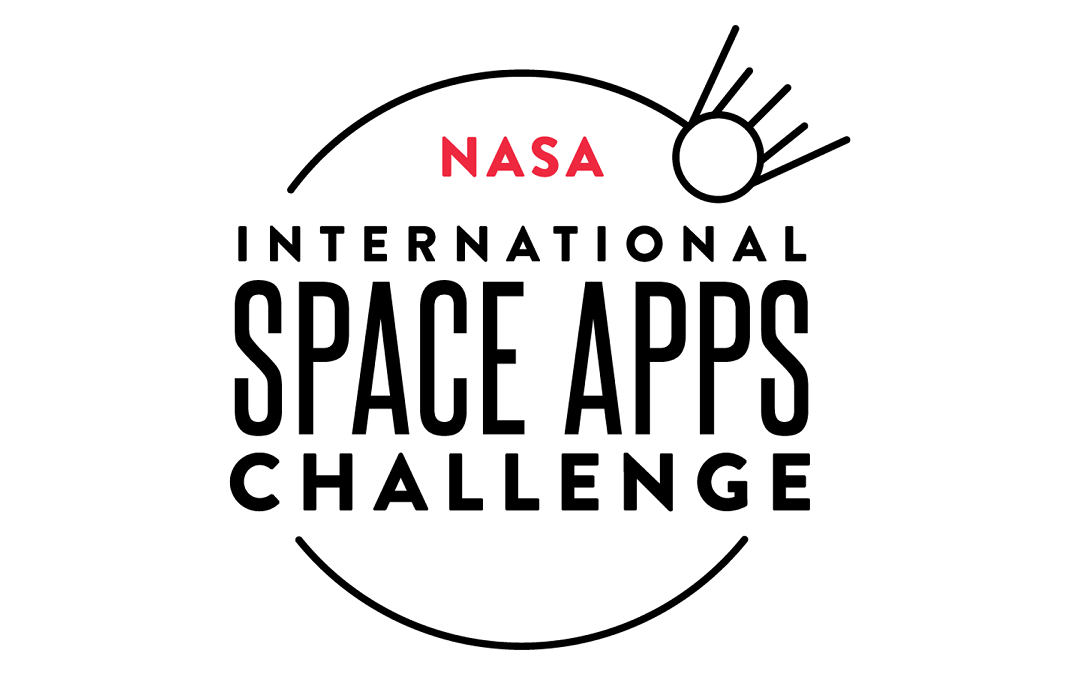Innovation and enthusiasm: Key factors for achieving sustainability
Sustainable Development Goal (SDA) number 15 aims to sustainably manage forests, combat desertification, halt and reverse land degradation and stop the loss of biodiversity. Achieving this in a context-specific manner requires creativity, knowledge, technology, and financial resources. Artificial intelligence and the determination to put it at the service of society have great potential to accelerate the pace of progress of the SDGs.
Agronielsen, MLOnfire and Firen’t are 3 of the 18 teams that took part in the locally organized Cali event of NASA’s International Space Applications Challenge, organized at the beginning of October 2020 by SERVIR-Amazonia, and coordinated by the Alliance of Bioversity International and CIAT, Cali’s Secretariat for Economic Development, and Global Shapers Cali.
While the three teams weren’t lucky enough to win a place in NASA’s Global SpaceApps Challenge competition, they did receive a special mention for their enthusiasm, innovation and problem solving that affects the world, as well as for their creativity and ability to generate value.
NASA: a name that motivates
To participate in an event in your city that is happening simultaneously in different places around the planet, organized by NASA, means having the opportunity at a global level to make visible, solutions and developments that Colombian talent have been designing and executing for a range of cutting-edge issues.

Ricardo Zambrano and Isabel Fajardo, together with Eduardo Peña they make up the Agronielsen.com team.
“Each hackathon we participate in is a chance to contribute, and in this particular case to NASA, and to CIAT. We are always thinking beyond the competition itself, generating solutions that go beyond creating an alert and achieve impacts in the medium and long term”, emphasizes Ricardo Zambrano. Together with Isabel Fajardo and Eduardo Peña they make up the Agronielsen.com team, that is also a company dedicated to contributing to make the so called agriculture 4.0 a reality, in which data and its analysis work more efficiently, with lower costs, achieving a higher productivity.
There was also a keen interest in data science. This was the case of the MLOnfire Team, who include Christian C. Urcuquí, Cristhian E. Castillo and Johan S. Delgado. “When we heard about the event, we saw a chance to contribute to science and be in contact with NASA. It was a buzz to be able to participate and get to know NASA’s data, and to see their approach to the climate issue”, says Cristhian Castillo, a Systems Engineering student in his eighth semester at Icesi University.
The challenge also attracted the intense interest of two automation engineers from La Salle University; Cristian Cristancho and Nicolás Rodríguez who are the Firen’t team, together with Santiago Carvajal and Gabriel Cerón. “Sometimes the subject of artificial intelligence (AI), data analysis and machine learning (a branch of artificial intelligence to develop techniques that allow computers to learn) seem distant, alien subjects. We are always on the lookout for hackathons, so that we can be at the forefront of data and the solutions that can be created with it,” says C. Cristancho.
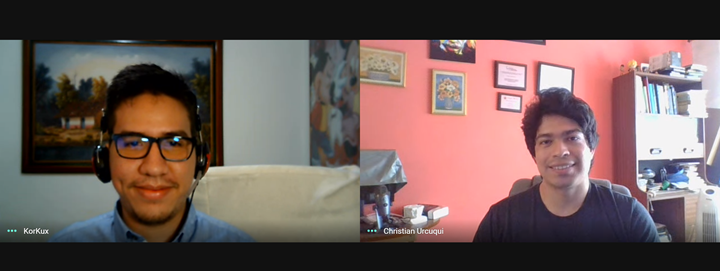
Cristhian E. Castillo and Christian C. Urcuquí, together with Johan S. Delgado they make up the MLOnfire team.
Fire and the effects of climate change: two sources of inspiration
In 2019 emissions from worldwide wildfires released 7.8 billion tons of CO2 into the atmosphere, equivalent to about 25 times the total emissions of Spain in one year. Hence the importance of having applications that go beyond reporting an outbreak of fire or conflagrations.
The Firen’t team, which has two developers, took data from satellites and infrared signals that are transmitted every 24 hours, and using an algorithm they grouped hot spots around the world. The team concentrated on calculating the location of fire by means of a rough estimate that when crossed checked with a database of all the towns in the world, allows the identification of the 5 towns that are closest to the fire. This solution stood out for trying to use automatic learning to qualify the events and to make an estimate of the cost of the loss caused by each fire in terms of money or natural resources. “The idea was to be able to put it on platforms like Twitter, so that it is more accessible to everyone, but we ran out of time,” says Nicolas.
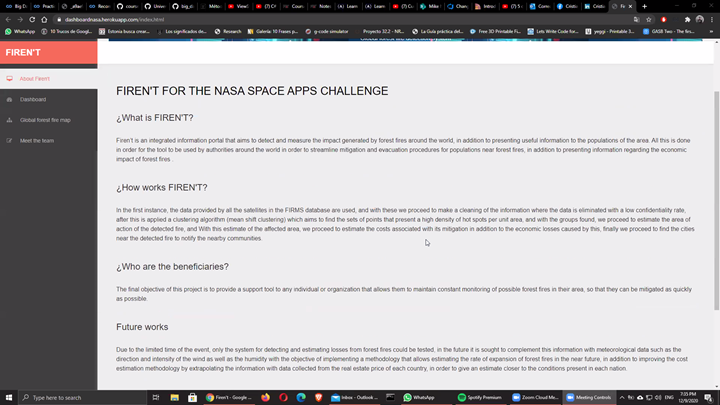
Firen’t, this solution stood out for trying to use automatic learning to qualify the events and to make an estimate of the cost of the loss caused by each fire in terms of money or natural resources.
For its part, the MLOnfire team, which was recognized by the judges for its ability to analyze more factors and more data beyond forest fires, focused on performing image processing to detect dust particles and make air quality predictions. This makes it possible to answer simple but key questions about community health, such as: How much is the air you breathe polluted by cigarette smoke? “What we are trying to do is to generate more friendly solutions for end users, provide recommendations and raise awareness in the community,” says C. Castillo, who adds that they are still working on the application, “finishing things that could have been better”.

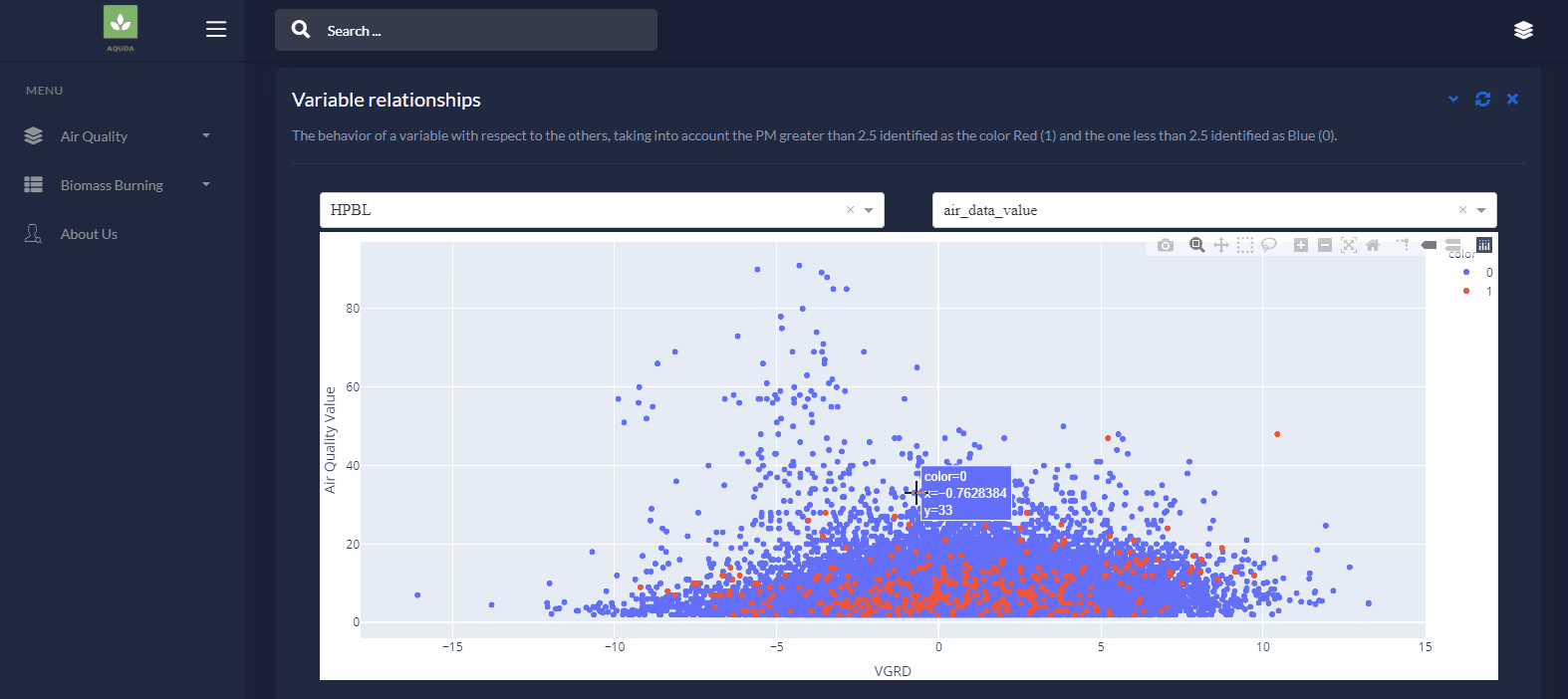
The MLOnfire team was focused on performing image processing to detect dust particles and make air quality predictions. This makes it possible to answer simple but key questions about community health, such as: How much is the air you breathe polluted by cigarette smoke?
Meanwhile, the Agronielsen team’s approach is centered in generating solutions made from Artificial Intelligence (AI) to predict the impact of climate change on the productivity of farmers. In Latin America it is estimated that around 270 million people suffered agricultural losses (particularly in Brazil), caused by the drought in 2020 which cost an estimated 3000 million dollars.
“The important thing is that we start using AI to help farmers, to mitigate the impact of climate change on their work. It’s about creating solutions that go beyond predicting that there will be rain tomorrow, to calculating the possible appearance of flora such as fungi, to stop using agrochemicals, for example, and reduce the effects it has on water and wildlife,” explains Ricardo. The team’s solutions caught the attention of the SpaceApps Challenge judges because it works with meteorological variables, to avoid losses in agricultural production.
Always restless, always learning, always improving
As the three teams continue with their projects that grew out of the challenge to generate solutions in their chosen fields, the Agronielsen team emphasizes the crucial importance joint working to, “identify what other ideas we need to work on and develop? We need to involve professionals and investigators from other disciplines that can offer more insights and ideas” says Isabel. “So, that we can keep moving forward to improve and optimize the technology” adds Ricardo.
The Agronielsen team are also aware of the need to create a positive user experience, while facilitating the potential for entrepreneurial innovation. “The solution we developed is free, that means we can make it visible/available for those who use it or build on it, or have it to hand because it is open,” said C. Castillo, for whom it is clear that projects like this need investment in time, talent and a desire to continue learning to improve. “We invite people to sign up for this type of project because they can quickly develop tools that can have an impact on society, explore new horizons and answer the question, what is needed, in order to contribute?” said C. Urcuquí.
For Christhian Cristancho, “there are many opportunities to help achieve the Sustainable Development Goals by putting artificial intelligence at the service of the community. It is all about public and private interconnections to support these types of applications, to make the use of open and reliable data more popular in Colombia, and to support events such as this hackathon in which talent is thrown into the arena, to generate developments that help citizens,” says Nicolas.
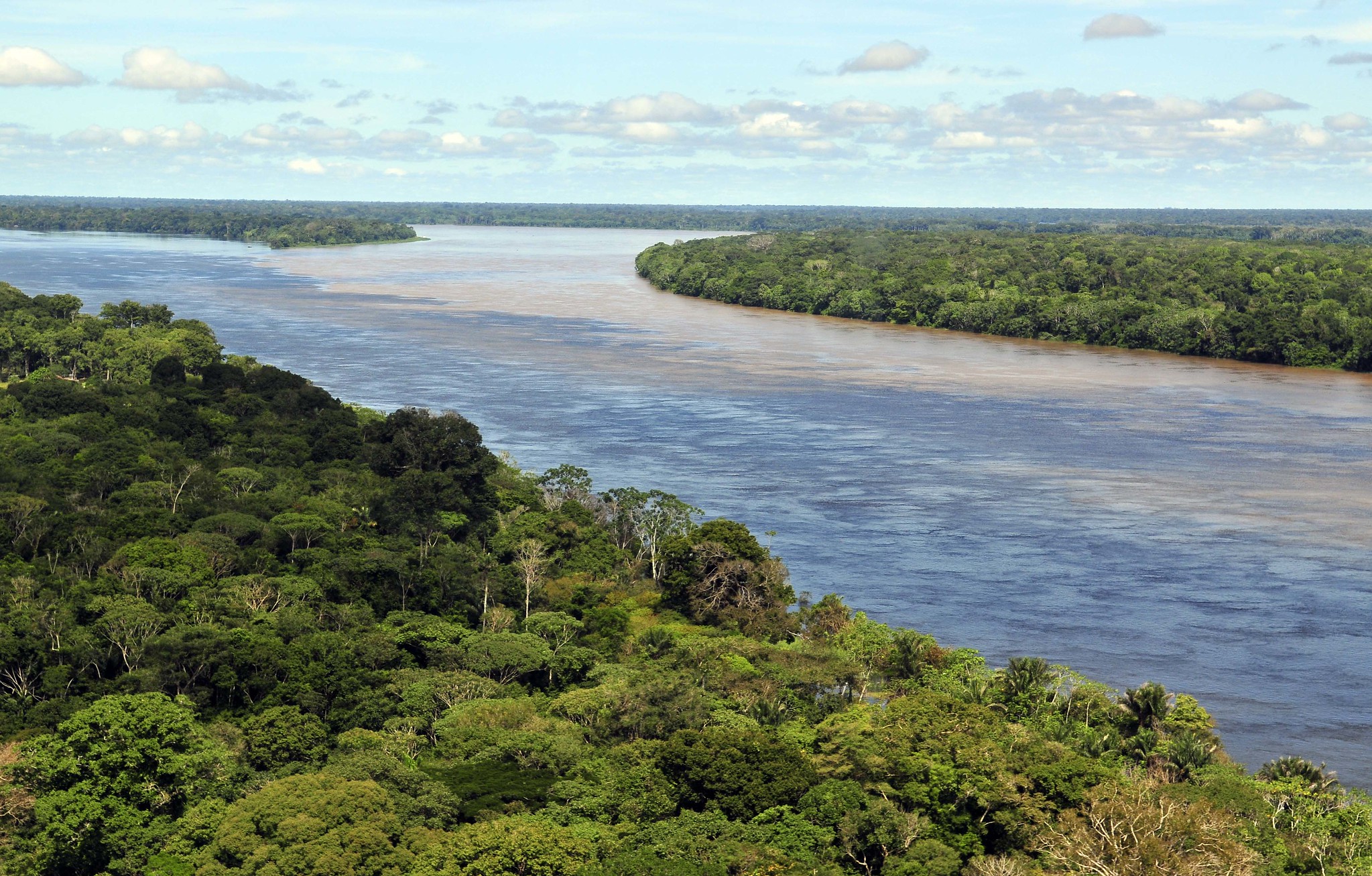
A conversation between experts with experience and trainees
A promise is a promise, and one of the commitments made to the finalists and winners of the Space Apps Challenge (Cali) was to organize a meeting with international researchers.
The two winning teams (FireGoApp and Lookin’ for fire), and the two teams that received a special mention in the Space Apps Challenge (Firent and MLOnfire), were invited to the online meeting held on February 8, with Kátia Fernandes, Professor at the University of Arkansas (UARK) in the United States. Professor Fernandez is a climate change scientist with expertise in tropical climates, including the impacts of climate variability and large-scale climate change on droughts and fires in the rainforests of the Amazon and Indonesia. Also participating in the meeting was Brian Zutta, SERVIR-Amazon’s Science and Data (GIS) Leader, who specializes in geospatial predictive modeling, deforestation and forest degradation monitoring.
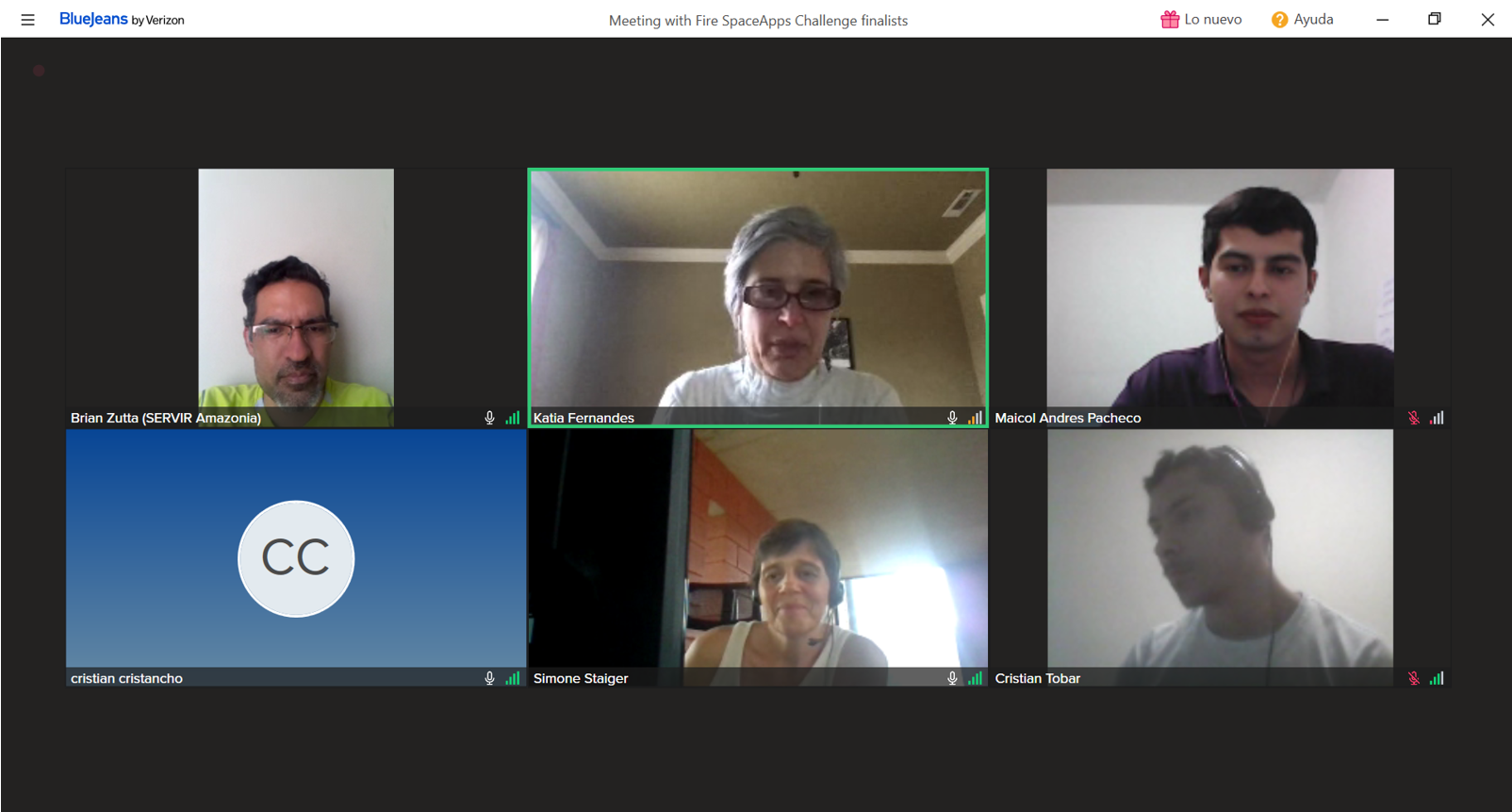
“The objective here is clear,” said Katia, “it’s about seeing the potential in these projects and their inspiring proposals for the future”. The two-hour session was focused on understanding better (from a technical and conceptual perspective), how the teams combined open data provided by NASA, the knowledge they obtained through a review of the available literature, their innovation, and willingness to go beyond current technologies.
“FireGoApp is very promising. The issue here is to identify the data available in real time and to use the application and expand the analysis for the Amazon”, said Katia, who along with Brian, also acknowledged the novelty of the app proposed by Firen’t, which estimates the economic cost of a fire; “a fire in the middle of a lot of concrete, is not the same as a fire in the middle of jungle vegetation”, explained Brian.
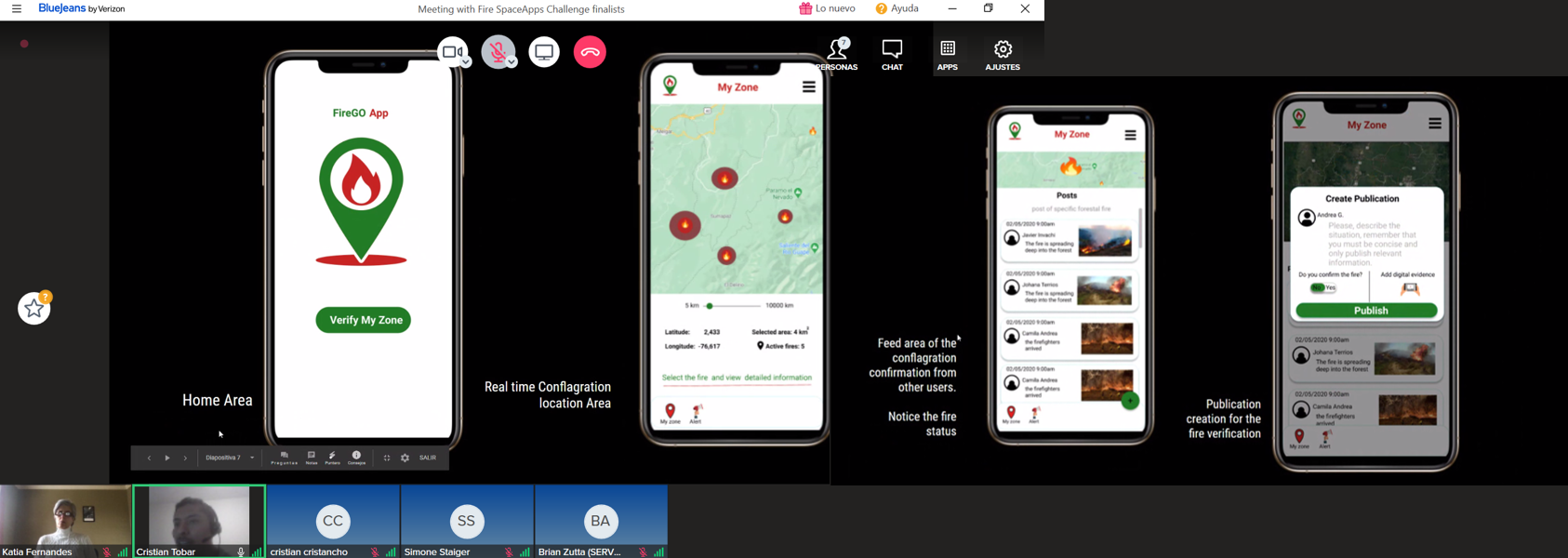

Beyond algorithms and data, there is also the subject of the future life projects for each of the team’s young professionals. For Cristián Tobar of FireGoApp, “it is incredible to know that you can contribute to generating knowledge and earn a living, or in other words, learn while working and live life learning”. For Cristián Cristancho from the Firen’t team, the goal is to continue training in all these areas and continue with his master’s and doctoral studies. Brian recommended to, “keep an open mind about the possibilities offered by universities other than the most recognized ones. Start connecting with academics and researchers who are working on these issues in Colombia, the United States, the European Union, and of course, visit the Academic Partner Network, because it is by working together as a team that we generate solutions”.



